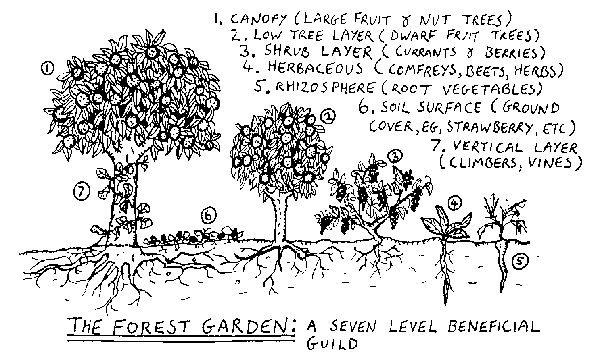
 6
6




 1
1





 5
5




How Permies works: https://permies.com/wiki/34193/permies-works-links-threads
My projects on Skye: The tree field, Growing and landracing, perennial polycultures, "Don't dream it - be it! "
 3
3




 3
3




Rebecca Marcella wrote:I know they say you need like something like 5 acre per person to feed a human being right? Like this makes sense assuming a "standard modern diet". We're talking corn, wheat, meat etc.
But realistically is it possible to reduce that land requirement by changing what we consider to be staple crops? For example if your average city lot had several semi-dwarf trees of various fruit, nut, olive etc varieties , plus maybe a backyard animal crop like chickens, rabbits etc might a couple or small family (i.e 2 parent plus kid) be able to get closer to self sufficiency on say 1/4 acre or less? I don't assume they could EVER reach full self sufficiency because of how much FEED animals require, and how hard it is to get enough nutrient input into the soil, but certainly dependence on the global industrial food system could be lessened? And perhaps this model of using more indigenous and traditional staple crops would improve community resiliency to climate change??






"The world is changed by your example, not your opinion." ~ Paulo Coelho
 2
2




My tree nursery: https://mountaintimefarm.com/
 1
1




R. Han wrote:Most nut trees are fatty, it is advised to also eat starch.
So plant chestnuts if applicable in your location, those are high in starches.
I have read somewhere that in fromer times, the rulers wanted the commoners to get rid of the chestnut trees,
because with the chestnut tree in their backyard the commoner was less likely to go to work to earn coin to exchange that for food.
 1
1




Iterations are fine, we don't have to be perfect
My 2nd Location:Florida HardinessZone:10 AHS:10 GDD:8500 Rainfall:2in/mth winter, 8in/mth summer, Soil:Sand pH8 Flat
 5
5




Weeds are just plants with enough surplus will to live to withstand normal levels of gardening!--Alexandra Petri

|
I thought it was a bear, but it's just a tiny ad
Learn Permaculture through a little hard work
https://wheaton-labs.com/bootcamp
|




